Before installing hickory flooring, an essential step that cannot be overlooked is the acclimation process. This procedure ensures that your new hickory floors will adapt to the humidity and temperature conditions of your home, reducing the risk of warping, cupping, or gaps developing over time.
The recommended duration for hickory flooring to acclimate typically ranges from 5 to 14 days. However, this timeframe can vary based on specific climate conditions and the unique characteristics of each installation environment.
Proper acclimation of hickory hardwood floors is a critical aspect of the installation process, ensuring the longevity and beauty of your flooring investment.
Hickory flooring is renowned for its exceptional durability and distinctive grain patterns, making it a popular choice for homeowners seeking both elegance and resilience in their flooring options.
The importance of acclimation for wood floors, particularly for varieties like hickory, cannot be overstated. Acclimation allows the wood to adjust to the ambient conditions of its final installation environment, minimizing the risk of post-installation issues such as warping, cupping, or the creation of gaps between planks.
This crucial process ensures that the natural beauty and structural integrity of hickory flooring are preserved, thereby enhancing its longevity and performance in a variety of indoor settings.
Factors Influencing Acclimation Time
Ambient Temperature

The ambient temperature of the installation environment plays a significant role in the acclimation process of hickory flooring. Ideally, the room where the flooring will be installed should be maintained at a consistent temperature that mirrors typical living conditions, generally between 60 to 80 degrees Fahrenheit.
Fluctuations in temperature can affect the moisture content of hickory wood, thereby influencing how well it adjusts to its new surroundings.
Maintaining a stable temperature ensures that the flooring material adequately acclimates, reducing the likelihood of expansion or contraction that could lead to warping or gaps after installation.
Homeowners must monitor and control the temperature within their homes during the acclimation period to ensure optimal results.
Humidity Levels
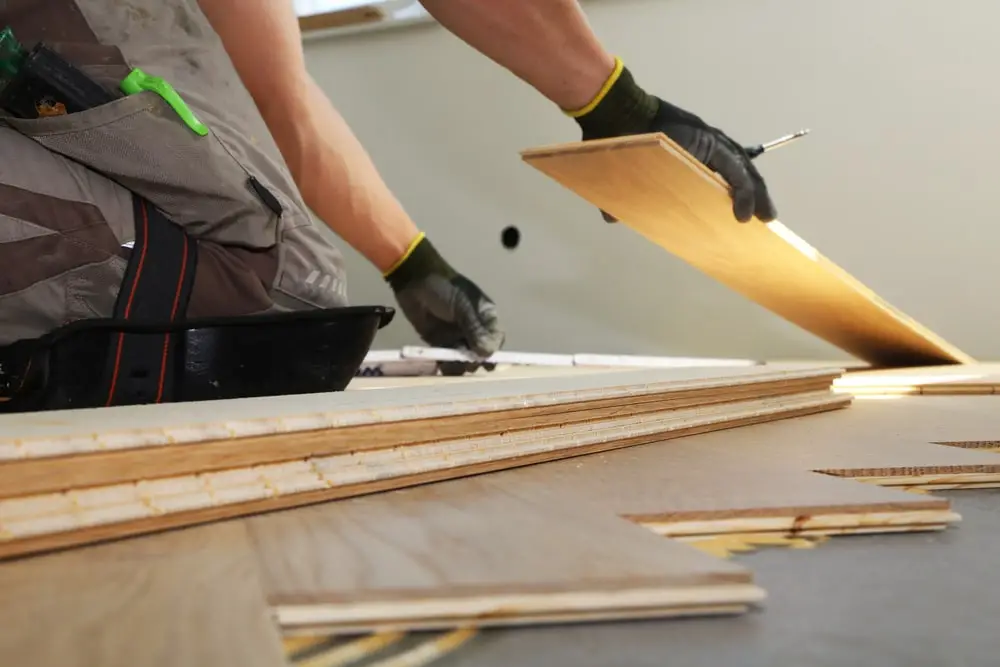
Humidity levels within the installation environment are another critical factor affecting the acclimation process of hickory wood flooring.
The ideal range of relative humidity for this purpose is typically between 35% to 55%. This range helps to manage the wood’s natural expansion and contraction as it responds to moisture in the air.
Excessive humidity can cause the wood to swell and potentially warp, while too low humidity might lead to shrinking and the formation of gaps.
To ensure a successful acclimation process, homeowners should use humidifiers or dehumidifiers to maintain indoor humidity levels within the recommended range.
Monitoring these levels with a hygrometer can provide further assurance that the hickory flooring will stabilize correctly, preventing future issues related to moisture imbalance.
Seasonal Variations
Seasonal variations in weather bring about changes in temperature and humidity, which can significantly impact the acclimation process of hickory wood flooring. During the warmer, humid months of summer, wood flooring is likely to expand as it absorbs moisture from the air.
Conversely, in the cold, dry winter months, wood tends to contract. Being aware of these seasonal tendencies is crucial for homeowners planning the installation of hickory flooring.
It’s recommended to schedule the acclimation and installation during a season that best mirrors the average living conditions in the home.
This approach helps minimize the natural expansion and contraction of the wood post-installation, thereby preserving the integrity and appearance of the flooring over time.
Recommended Acclimation Duration
The general guideline for acclimating hickory flooring recommends a duration of 7 to 14 days within the environment where the flooring will be installed. This period allows the wood to adjust to the home’s specific temperature and humidity levels.
Homeowners should spread the flooring materials across the room, providing adequate space between planks to ensure air circulation.
This setup facilitates an even acclimation process, ensuring the wood’s moisture content stabilizes effectively before installation.
Adjustments Based on Specific Conditions
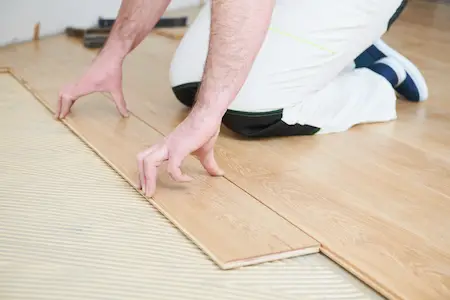
Depending on the specific conditions of a home or installation site, adjustments to the recommended acclimation period for hickory flooring may be necessary.
Homes with high humidity levels or those located in particularly dry regions might require extended acclimation times to ensure the wood adequately stabilizes.
In contrast, environments with controlled climate conditions, such as homes with consistent heating, ventilation, and air conditioning (HVAC) use, may allow for a shorter acclimation period.
Additionally, the installation of a dehumidifier or humidifier can help create a more stable environment, facilitating the acclimation process.
Homeowners need to monitor the moisture content of the wood and the ambient conditions during acclimation, making adjustments as needed to mitigate potential flooring issues related to environmental stressors.
Steps for Proper Acclimation
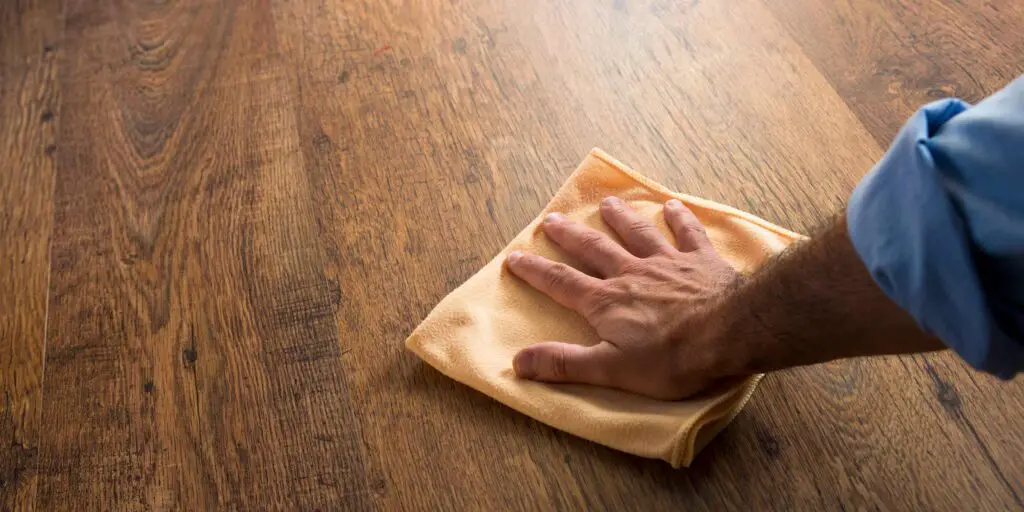
Preparing For Environment
To optimally prepare for the acclimation of hickory flooring, homeowners should first ensure the environment is suitable for the wood’s adjustment period. Begin by thoroughly cleaning the area where the flooring will be laid out, removing any dust, dirt, or debris that could affect the wood’s condition.
It’s imperative to maintain a stable temperature and humidity level in the room for at least 48 hours before introducing the wood.
The ideal temperature range for acclimation is between 60°F and 80°F, with humidity levels maintained between 30% and 50% to mimic typical living conditions.
Utilizing tools such as hygrometers to monitor the environment can provide precise readings, allowing for adjustments to the room’s climate using humidifiers or dehumidifiers as necessary.
This preparation ensures that the hickory flooring adjusts accurately to its new surroundings, reducing the risk of warping or other moisture-related issues after installation.
Positioning the Flooring
Once the environment is properly prepared, the next step is to strategically place the hickory flooring within the space for acclimation.
It’s crucial to spread out the flooring in an even layer across the room, avoiding stacking the planks as this can restrict airflow and lead to uneven moisture absorption.
If the room is too small to lay out all pieces side by side, consider using multiple rooms for acclimation, ensuring each piece is exposed to similar conditions.
Additionally, placing the wood near the installation area but not directly against walls or over vents can help in achieving a more uniform acclimation.
Monitoring Conditions
Regularly monitoring the conditions of the room during the acclimation process is critical to ensure the hickory flooring adapts properly to its new environment.
Utilizing hygrometers for precise humidity readings and thermometers for temperature checks allows for dynamic adjustment of the room’s climate.
It is recommended to record these conditions at least twice a day, in the morning and in the evening, to track any significant fluctuations. If deviations from the ideal range are detected, employing humidifiers to increase humidity, or dehumidifiers and air conditioners to decrease it, can help stabilize the environment.
This vigilant monitoring and adjusting not only safeguards the flooring against potential moisture issues but also paves the way for a smoother and more durable installation.
Related Topics:
Significance of Acclimation
Impact on Installation Quality
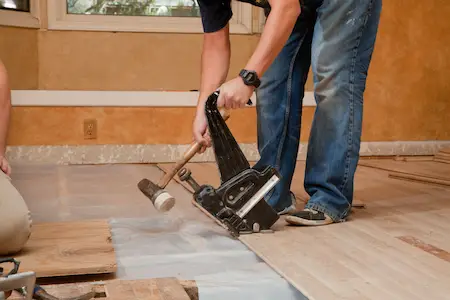
Acclimating hickory flooring properly before installation significantly impacts the quality of the installation process. This step ensures the wood planks adjust to the indoor climate, reducing the likelihood of gaps, buckling, or warping post-installation.
A well-acclimated floor adheres better to the subfloor, making the installation smoother and the finish more uniform.
This meticulous preparation work ensures that the flooring can be installed with precision, resulting in a seamless and professional appearance that lasts.
Long-term Durability and Appearance
The long-term durability and appearance of hickory flooring are directly influenced by the thoroughness of the acclimation process. Proper acclimation minimizes the natural expansion and contraction of wood caused by changes in humidity and temperature, which can lead to structural issues over time.
By allowing the wood to stabilize before installation, it is more likely to maintain its integrity and beauty for years to come.
This resilience translates into a floor that not only looks exceptional but also withstands the demands of daily use, retaining its timeless appeal and contributing to the overall value of the property.
Common Mistakes to Avoid
Rushing the Acclimation Process
One significant mistake during the installation of hickory flooring is rushing the acclimation process. Acclimation requires patience; hickory planks need sufficient time to adjust to the moisture and temperature conditions of their new environment.
Rushing this process can lead to dire consequences for the flooring’s longevity and appearance. Without adequate time to acclimate, hickory planks are prone to expand or contract post-installation, leading to gaps, buckling, or warping that compromise both the structural integrity and aesthetic value of the flooring.
It’s essential to allocate adequate time, typically between 5 to 14 days, depending on specific environmental conditions, for the wood to properly acclimate.
Failure to do so not only risks the initial quality of the installation but can also incur additional costs and efforts in repairs over time.
Neglecting Environmental Factors
Neglecting environmental factors during the acclimation process is another common pitfall that can adversely affect hickory flooring. The indoor environment where the flooring is to be installed must be carefully controlled in terms of temperature and humidity.
Ignoring these factors can disrupt the acclimation process, as wood is highly sensitive to environmental changes.
Sudden variations in humidity and temperature can cause the wood fibers to expand or contract unpredictably, leading to permanent damage that affects both the aesthetics and functionality of the flooring.
Ensuring a stable environment, ideally maintaining a relative humidity level between 35% to 55% and a temperature around 60°F to 80°F, is crucial for the successful acclimation of hickory flooring.
This stability helps minimize the potential for flooring issues and extends the life and beauty of the wood.
Conclusion
The proper acclimation of hickory flooring is a crucial step that should not be overlooked. Allowing sufficient time for hickory planks to acclimate, specifically between 5 to 14 days depending on environmental conditions, ensures that the wood adjusts to its new surroundings, preserving its aesthetic appeal and structural integrity.
Addressing environmental factors like temperature and humidity also plays a vital role in this process, maintaining a stable condition within 60°F to 80°F and a relative humidity level of 35% to 55% respectively.
By meticulously adhering to these guidelines, homeowners and installers can significantly reduce the risks of gaps, buckling, or warping, ultimately extending the life, beauty, and functionality of hickory flooring.
FAQs
How long should hickory flooring acclimate before installation?
Hickory flooring should acclimate for a period of 5 to 14 days before installation, depending on the specific environmental conditions of the installation area.
What temperature and humidity levels are ideal for acclimating hickory flooring?
The ideal temperature range for acclimating hickory flooring is between 60°F and 80°F, with a relative humidity level maintained between 35% to 55%.
Can improper acclimation of hickory flooring lead to long-term damage?
Yes, improper acclimation can lead to the expansion or contraction of wood fibers, causing permanent damage such as gaps, buckling, or warping, ultimately affecting both the aesthetics and functionality of the flooring.
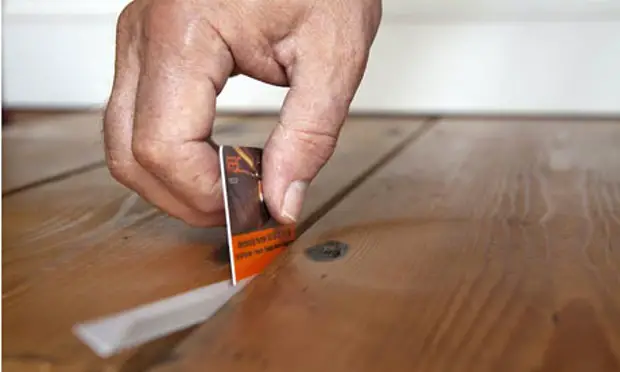
1 thought on “How Long Should Hickory Flooring Acclimate”